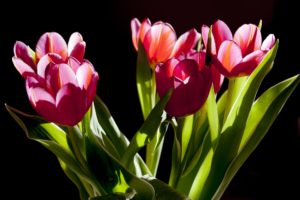 Philosophers throughout history have asserted that “the fundamental nature of the world is aesthetic” (Alfred North Whitehead, Gregory Bateson,James Hillman, Martin Foss,Donald Winnicott to name a few.) That said, it’s interesting that the word aesthetics comes from the Greek word “aisthenesthai” which is the ability to perceive.
Philosophers throughout history have asserted that “the fundamental nature of the world is aesthetic” (Alfred North Whitehead, Gregory Bateson,James Hillman, Martin Foss,Donald Winnicott to name a few.) That said, it’s interesting that the word aesthetics comes from the Greek word “aisthenesthai” which is the ability to perceive.
When he was alive, archetypal psychologist James Hillman often quoted an ancient philosopher named Marsilio Ficino who said that the world is “an animal.” (Meaning the world is alive and speaking to us.) The world shows itself to us as a living being; each thing has a face and calls for our attention. Hillman wrote, “Aesthetics in this primordial sense involves sensing the things of the world in their particularity and being affected by the many ways things present themselves.”
Our response to this “call for attention” is aesthetics.
Hence the word “aesthetic space”…because it’s only when we make space for beauty, that beauty presents itself to us. We pause, take a moment to notice and appreciate the particulars of something, and enter aesthetic space.
My book, Getting Messy: A Guide to Taking Risks and Opening the Imagination, is a call for aesthetic space in teaching, training, coaching, and mentoring relationships.
I spent so many years in dry, joyless educational settings. I always had a strong yearning to understand the experience of teaching and learning not as dry and joyless, but as beautiful, life-giving, and creative. To teach (as well as to learn), requires courage, an open heart, and the willingness to be vulnerable. But instead of noticing, appreciating and honoring this inherent beauty and vulnerability, our focus in education has been on achieving goals–which focuses our attention on some abstract thing in the future. When we’re focused on the distant future, we’re not in the beauty of the present moment….we’re not in a place of depth.
Aesthetics is closely linked to beauty, if we define beauty not as “refinement” or “polish,” but rather as feeling the depth of something. Another way to think of beauty is feeling with our hearts. Elaine Scarry, professor at Harvard, wrote in her book On Beauty and Being Just:
- beauty attends with it a sense of abundance
- beauty makes possible a moment of largess or generosity
- beauty can usher in forgiveness
- in the presence of beauty, we have an opportunity to heal
In A Portrait of an Artist as a Young Man, James Joyce wrote that beauty is “the communication of the hidden power behind the world, shining through some physical form.”
When we teach, train, coach, and mentor, we’re serving something beyond ourselves. If we’re aware, we can recognize beauty shining through the physical form of our clients, students, or group. Ideally, we can make space for that beauty. Paradoxically, making space for beauty greatly facilitates learning, because it fuels inspiration and passion–the desire to learn.
The writer Iris Murdoch said that beauty is anything that aligns us with unselfishness. Or to say it another way, beauty is the “process of un-selfing.” At our best, as teachers, trainers, coaches and mentors, we are serving something greater than ourselves. This is aesthetic space.
Give your creativity a kick in the pants.
Kim Hermanson, PhD is a visionary educator and faculty at Pacifica Graduate Institute. She is an international expert on the psychology of metaphor, and recently published a new book, Deep Knowing: Entering the Realm of Non-Ordinary Intelligence. Mihaly Csikszentmihalyi, author of The New York Times bestseller, Flow: The Psychology of Optimal Experience, said this of Deep Knowing: “Not since Carlos Castenada’s books 40 years ago have I had such a strong reaction. This is very powerful stuff.” Kim is also the author of Getting Messy: Taking Risks and Opening the Imagination, Sky’s the Limit, which received an Independent Publisher Award, and several articles with Mihaly Csikszentmihalyi. Her PhD is from the University of Chicago.

